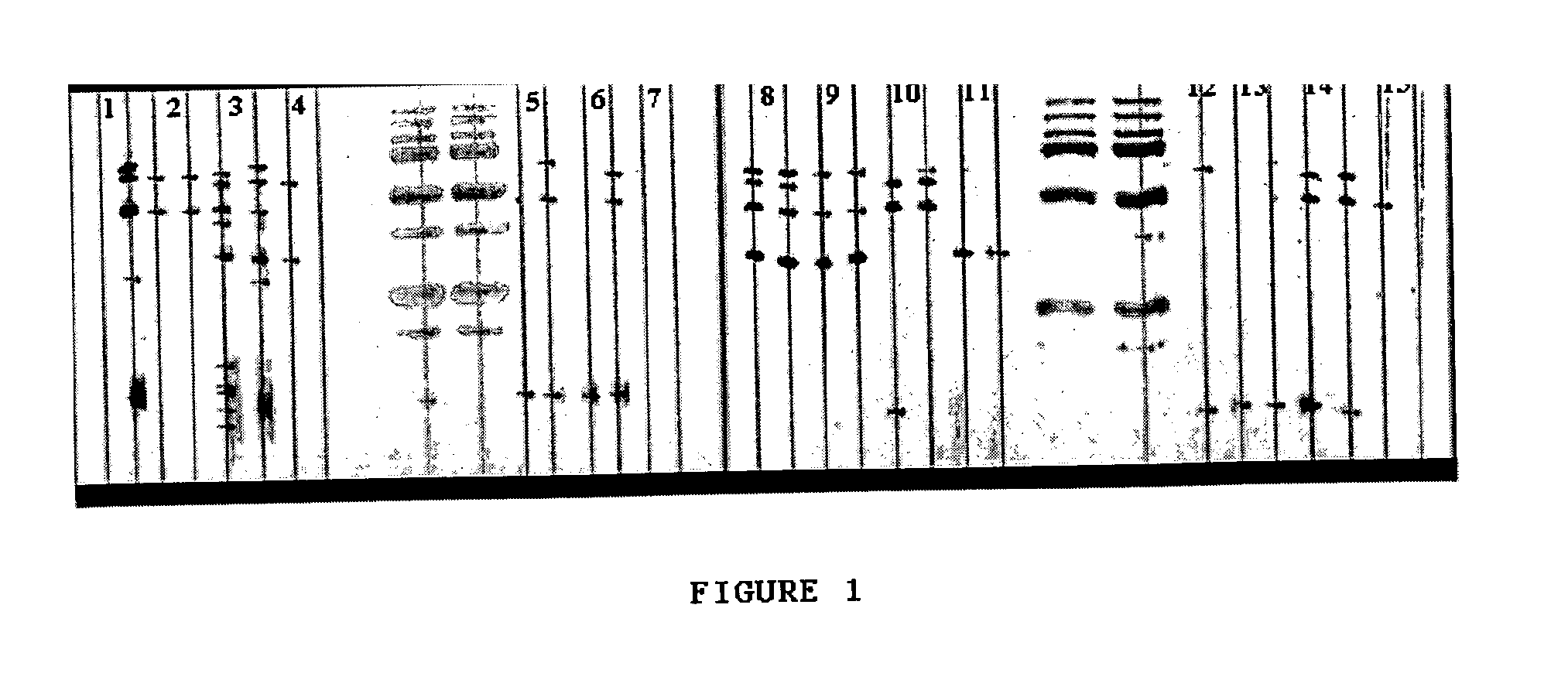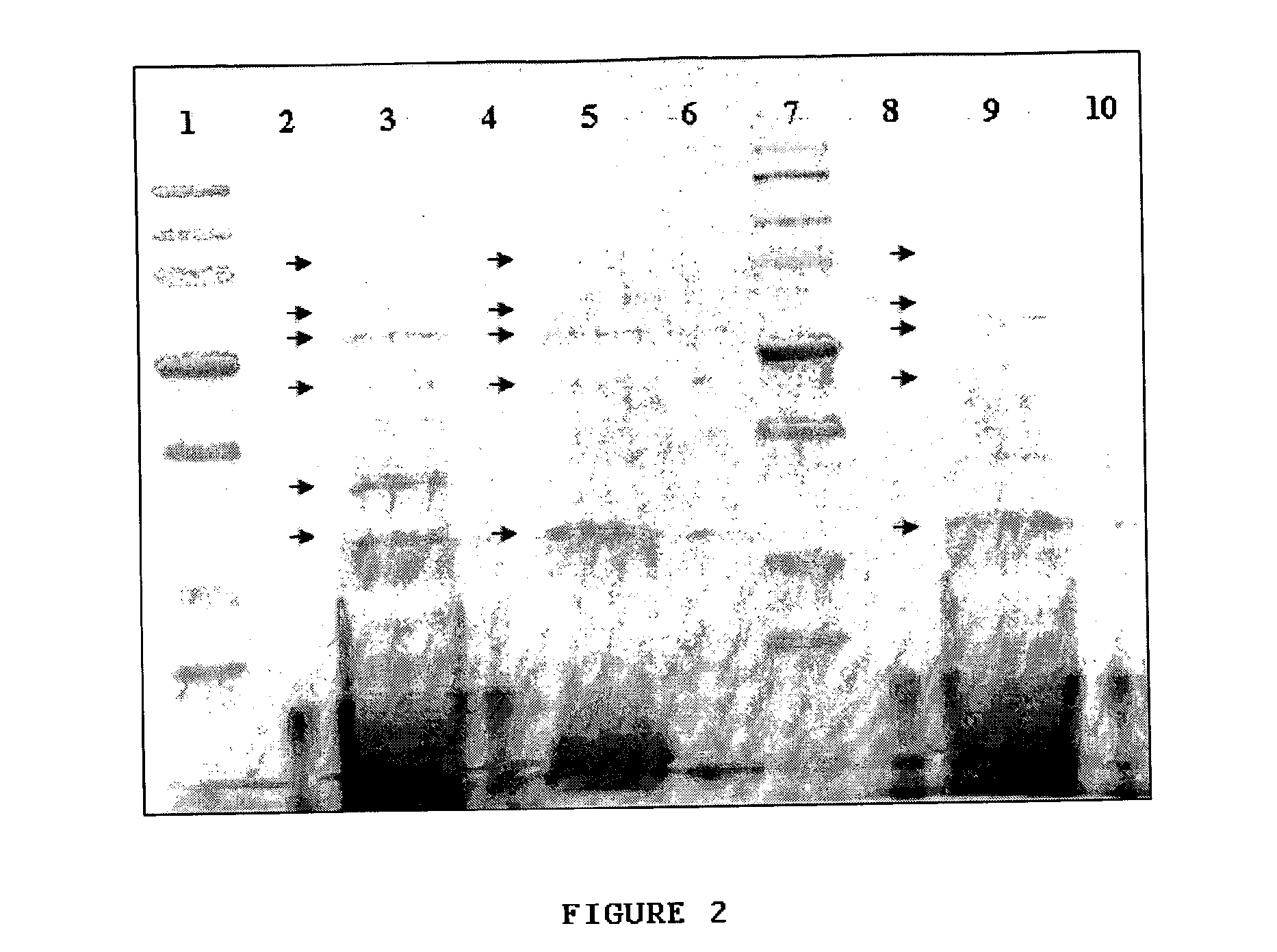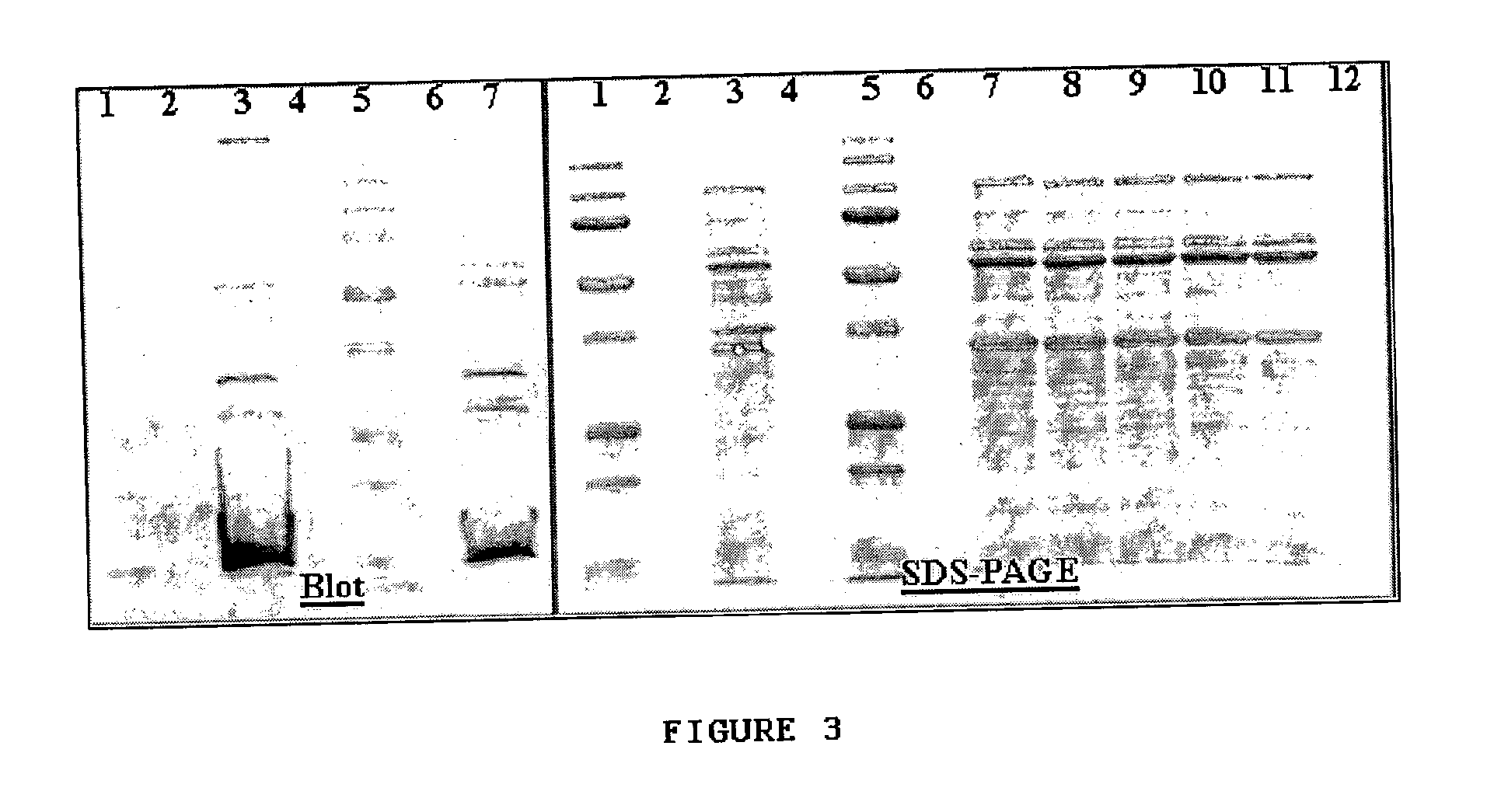Cross-reactive determinants and methods for their identification
- Summary
- Abstract
- Description
- Claims
- Application Information
AI Technical Summary
Benefits of technology
Problems solved by technology
Method used
Image
Examples
example 1
Sequential Challenge
[0096]All experimental animals were subject to the procedures set forth by the revised Public Health Service Policy on Humane Care and Use of Laboratory Animals, the Provision of the Animal Welfare Act, and other applicable laws and regulations.
[0097]The challenge composition was prepared as follows: a sterile cotton swab was dipped in thawed H. parasuis stock at approximately 5×108 Colony forming units (CFU) / ml and gently swabbed to cover the surface of a chocolate agar plate. The culture was incubated at 37° C. for 48 h in an atmosphere with 5% CO2. Three ml of peptone buffer was then used to wash the plate, using a cell scraper and passed through cheesecloth to remove any agar debris. Captured fluid was then normalized to 1 OD with peptone buffer. This level was reached at approximately a 1:11 dilution. The material was stored at 4° C. for approximately 1 h before use.
[0098]Eighteen colostrum-deprived, cesarean-derived (CDCD) pigs at 5 weeks of age were obtain...
example 2
SDS / PAGE and Western Blot
[0102]One ml of frozen H. parasuis stock at 5×108 CFU / ml was spread-plated onto chocolate agar plates. The culture was incubated at 37° C. for 48 h in an atmosphere with 5% CO2. Four ml of phosphate buffered saline (PBS) was then used to wash the plate, using pipette-induced flow to suspend the cells. Re-suspended cells were stored at 4° C. and used within 1 week. Two ml of the suspension was centrifuged (9,000 g, 1 hr) and pelleted cells were resuspended in 200 μl of PBS, washed twice with PBS, and disrupted by passage through an 18-gauge needle. The washed cell suspension was mixed 1:1 with PBS containing 2% Tween-20 and the incubated on a test tube rotator for 90 min at 37° C. After incubation, the cells were removed by centrifugation (48,000 g, 1 hr). The culture supernatant was kept and stored at 4° C. and used within 1 week.
[0103]SDS-PAGE was performed using the Criterion™ system with 12.5% acrylamide gels (Bio-Rad Laboratories, Hercules, Calif.). H. p...
example 3
Sequencing Results
[0108]Samples for sequencing were first run on an SDS-PAGE, then transferred to a PVDF membrane. This membrane was stained and bands were excised using a razor blade. Mass spectrometry was performed on gel plugs excised with a razor blade. Transfer buffer was standard Tris / Glycine buffer with 20% MeOH. The membrane was stained with GelCode Blue Stain Reagent (Pierce Biotechnology, Inc., Rockford, Ill.) and destained with ˜25% isopropanol in water. The membrane fragments were rinsed copiously with purified, deionized water.
[0109]Samples (i.e., ˜28, ˜45, ˜56, ˜63, and ˜76 kDa bands) were further characterized using mass-spectrometry (FIG. 4A-D) and N-terminal (Edman degradation) sequencing. N-terminal sequencing results provided the partial sequence information, which is shown in Table 2.
TABLE 2N-terminal sequencing results.SPAKGSTIEAGIAYPISRASEPQATX1DAKMKNLISIAKGGEIEELALGIMEKDVKFGNDARVGMLKGVNXKADASEIXELANAITFLSMGVGGKVPETTVLAXKQEIIXAPAKGSTIEAGIAYPISTAXDDMMSSPSDKTFKIS...
PUM
| Property | Measurement | Unit |
|---|---|---|
| Fraction | aaaaa | aaaaa |
| Fraction | aaaaa | aaaaa |
| Fraction | aaaaa | aaaaa |
Abstract
Description
Claims
Application Information
 Login to View More
Login to View More - R&D
- Intellectual Property
- Life Sciences
- Materials
- Tech Scout
- Unparalleled Data Quality
- Higher Quality Content
- 60% Fewer Hallucinations
Browse by: Latest US Patents, China's latest patents, Technical Efficacy Thesaurus, Application Domain, Technology Topic, Popular Technical Reports.
© 2025 PatSnap. All rights reserved.Legal|Privacy policy|Modern Slavery Act Transparency Statement|Sitemap|About US| Contact US: help@patsnap.com



